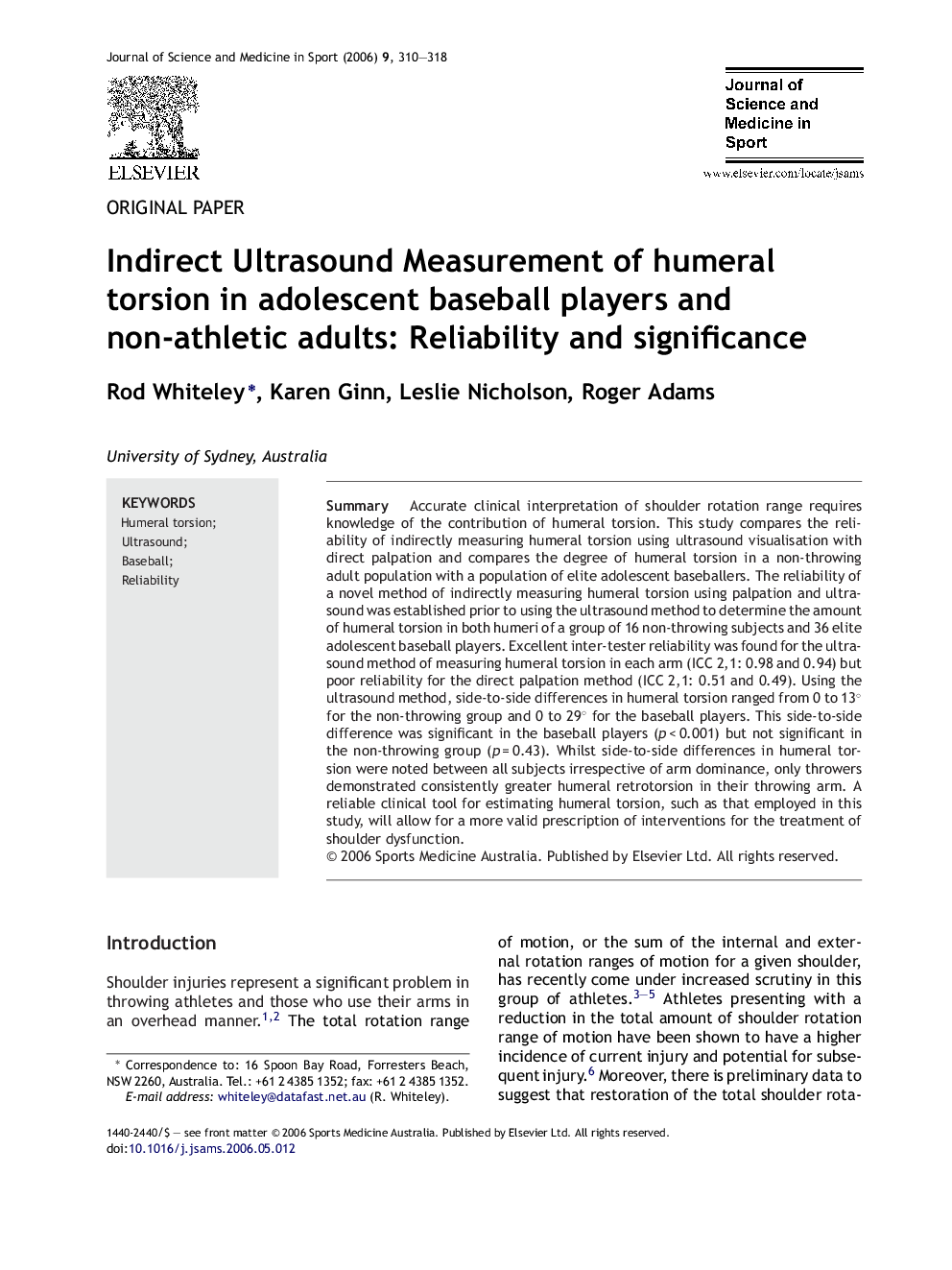| Article ID | Journal | Published Year | Pages | File Type |
|---|---|---|---|---|
| 2703447 | Journal of Science and Medicine in Sport | 2006 | 9 Pages |
SummaryAccurate clinical interpretation of shoulder rotation range requires knowledge of the contribution of humeral torsion. This study compares the reliability of indirectly measuring humeral torsion using ultrasound visualisation with direct palpation and compares the degree of humeral torsion in a non-throwing adult population with a population of elite adolescent baseballers. The reliability of a novel method of indirectly measuring humeral torsion using palpation and ultrasound was established prior to using the ultrasound method to determine the amount of humeral torsion in both humeri of a group of 16 non-throwing subjects and 36 elite adolescent baseball players. Excellent inter-tester reliability was found for the ultrasound method of measuring humeral torsion in each arm (ICC 2,1: 0.98 and 0.94) but poor reliability for the direct palpation method (ICC 2,1: 0.51 and 0.49). Using the ultrasound method, side-to-side differences in humeral torsion ranged from 0 to 13° for the non-throwing group and 0 to 29° for the baseball players. This side-to-side difference was significant in the baseball players (p < 0.001) but not significant in the non-throwing group (p = 0.43). Whilst side-to-side differences in humeral torsion were noted between all subjects irrespective of arm dominance, only throwers demonstrated consistently greater humeral retrotorsion in their throwing arm. A reliable clinical tool for estimating humeral torsion, such as that employed in this study, will allow for a more valid prescription of interventions for the treatment of shoulder dysfunction.
